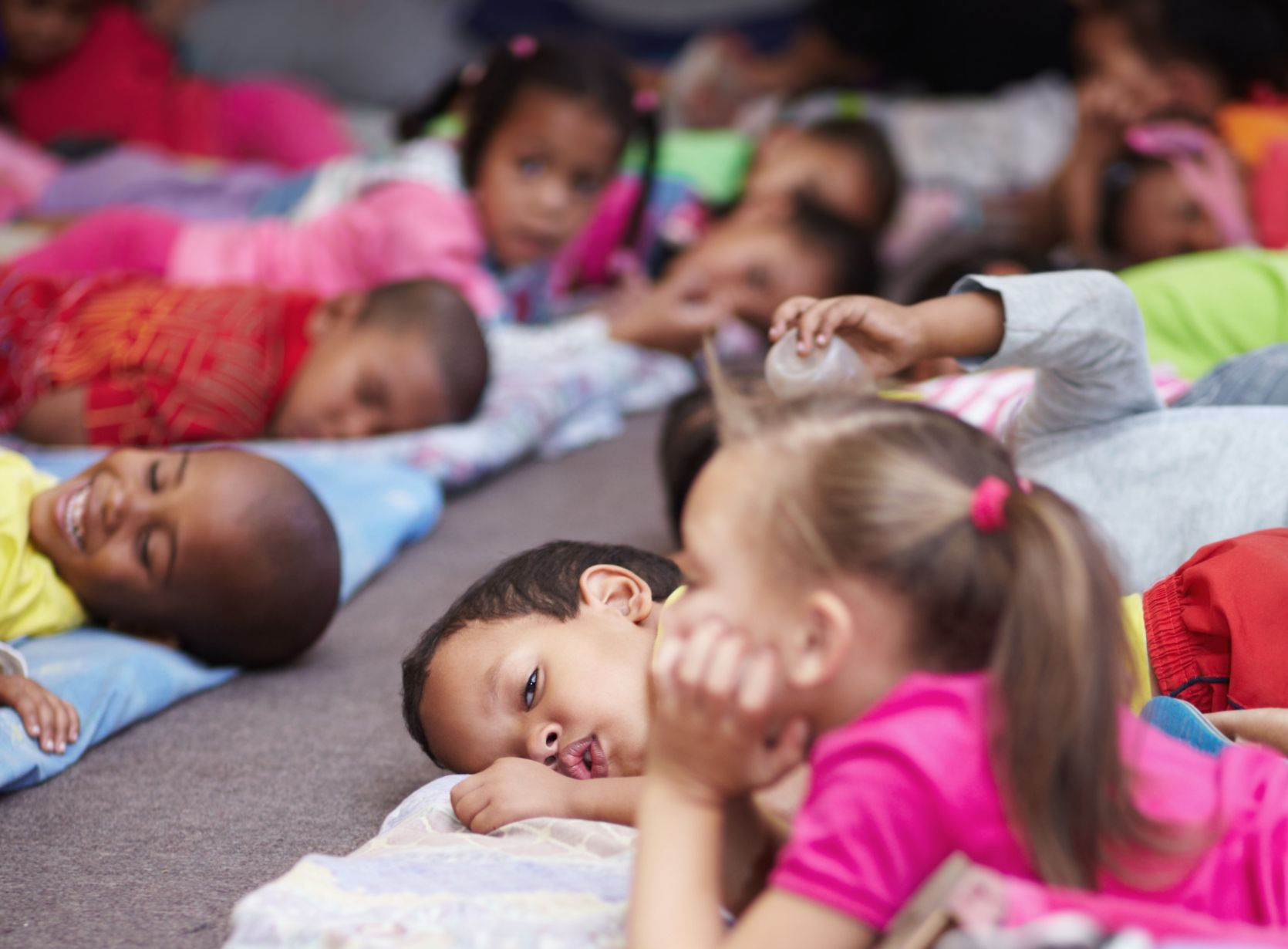Bringing Learning To Life – Why Learning Stories
Like any good book, a learning story has a plot and a hero
In a learning story, the hero is always the child. And instead of an epic battle in an enchanted forest, a learning story takes place in reality. It uses pictures and words to tell the tale of a child’s personal growth and development.
If you use a digital tool like Educa learning story software to write learning stories, then there’ll probably be photos or videos too.
It all helps bring the learning to life.
The Magic of Learning Stories
Learning stories use a storytelling format written about the child or written to the child. The narrative style allows the story-teller to capture the learning without the confinement of a list. And because they are simple and written from the story-teller’s perspective, they are entertaining and compelling reading for the parent.
Instead of “child is curious” on a report card, a learning story might read: “I saw you in the playground today, following a butterfly. You had a working theory that it might fly away if you got too close and so you were very quiet. I was so proud of how ….”
Learning stories are very different from the traditional checklist assessment that use fragmented evidence. They are a form of assessment for learning — teachers and families interpret the event in the story, reflect and collaborate on next steps for the a child.
What are Learning Stories?
Margaret Carr and Wendy Lee from New Zealand launched Learning Stories in 2001.
The vision was to use a personal narrative assessment format to compile a portfolio of stories that document a child’s unique learning journey and describe the child as a learner. And for this to be an assessment that is not isolated from the day-to-day life of the early childhood setting.
A Learning Story is a record of what a teacher or family has seen a child or group of children doing. In a Learning Story, the child is the hero. It’s not about instruction or learning related to instruction, but rather about strengths, interests and/or growth or success in a child’s exploration and play – in circumstances sometimes set up by teachers, sometimes not.
Typically, a Learning Story has three parts – laid out in Educa’s learning story software as the default template:
- An event, activity or moment(s) – generally with images and/or video
- An analysis of the learning
- A response, reflections that inform practice, next steps for the child
It becomes a ‘learning’ story when the writer adds his/her analysis and interpretation of the child’s learning and development. The writer draws on careful observations, prior understanding of a child and knowledge of the curriculum to reflect, analyze, share ideas and propose next steps.
A Learning Story should be as long (or short) as it needs to be – using text, images or videos in any combination. It is usually focused on a specific moment in time but may also be an accumulation of a child’s experiences over an extended period.
Learning stories are often also linked to learning frameworks and/or outcome goals, and to plans. They are used as an assessment tool and as a reporting method.
Stories are often documented in paper books, or digitally using an ePortfolio tool like Educa. Families, children and educators save them, to remember special moments, reflect on and learn from.
Share and Interpret
Learning stories are made for sharing. That includes the parents and the child. There are three forms of magic that happen in learning stories:
- The passion a teacher feels for a child’s learning progress comes through in the words
- The stories connect and engage parents, often eliciting a response, and
- For the child, it helps them connect the dots and see the consequences of their actions
Being able to write about the learning success of a child, for teachers, is what gets them up in the morning. It’s near to their heart. What parent can resist a story written about a child or better yet, a letter written to their child about something good that the teacher observed the child doing at school, something that reflects learning progress.
This is the magic of learning stories.
How Learning Stories Impact Learning
Here are eight powerful ways learning stories positively impact early learning.
1. Sense of identity
Learning stories are key methods in the development of a child’s sense of identity. By knowing what it is they are doing and understanding how they learn, children can develop their own interests as well as an all-important sense of self-worth. This will encourage more interest in learning by their own volition.
Community and belonging are important contributors to a child’s identity. Cultural norms can be transferred to the child through the use of learning stories. They help children learn what it is to be part of a community.
2. Family engagement, interpretation and contribution
Stories are not only beneficial to the child, but also to the parents. Through the story format a teacher can articulate the educational approach of the early learning service and how that reflects in the child’s learning. In learning stories, the educator’s passion for the child can shine through and engage the parents in a way that a dry report card or assessment cannot.
This matters. Parental engagement has a high correlation with achievement. Communication between home and school enhances learning.
By sharing stories with families that contain links to frameworks and interpretation of learning, learning stories allow teachers to include children and parents in the learning process. This is especially powerful when the sharing is in real-time via a digital platform. Parents can provide informed feedback on the learning analysis and/or the next steps in a collaborative way.
Both parties are on the same page, tracking the learning – inside and outside the school.
3. Children’s perspective
Recording events in a narrative form and in a child-friendly format (colors, images, etc.) creates the opportunity for teachers and families to read the story to the child.
This helps children see what they are learning from another perspective.
Some examples in Learning Stories: Constructing Learner Identities in Early Education by Margaret Carr tell of young children that are enthusiastic to show their portfolios to their families – even when the children themselves are not fond of reading. This instills a love for learning that grows with their portfolios. It allows them to recognize their achievements. This, in turn, allows them to achieve success in their educational endeavors.
4. Intensifies teacher noticing skills
The anecdotal, private observation approach more often than not is deficit-oriented. And without the lens of learning growth, any old anecdote will do. A teacher’s skills in recognizing learning growth moments is not really tested.
If a teacher is going to write 6-12 learning success stories in the course of a year, there needs to be a higher level of focus on a child’s learning journey. Story-worthy events – moments of learning growth or success — come in many different forms, but many will be missed if the teacher is not paying attention.
And if a teacher is paying closer attention to a child true learning trajectory, only good things can happen..
5. Helps children feel they are making a contribution
Even for young children, there is value in making learners accountable. It gives them a sense of control over their education.
Children need to feel that they’re having an impact on the world. If they feel that their actions are meaningful, they are more likely to engage in their learning. Writing learning stories helps with this sense of control, as it allows children to see how their actions are affecting the world around them.
This is one of the main reasons learning stories replaced checklists in New Zealand. Checklists tend to be deficit-oriented and children are aware of being looked at with a deficit-seeking mindset. Being seen as a collection of needs-to-do-betters is not how you build confidence and character in a child.
By comparison, knowing you are the hero in a sequence of learning stories that articulate success and points in time when you made a difference is a very different biography to prepare you for school life.
6. Permission for teachers to make it personal
There is traditionally a lot of pressure on teachers to be objective, and checklists are objective. But really, early childhood education is not objective, it’s personal. Learning stories give teachers permission to write exactly how they feel about their young hero’s learning success. This not only makes these stories easy to write for teachers, it makes for compelling reading – for parents and the child.
7. See the whole child
Learning Stories address the whole child at a point in time. Each story has elements of social and emotional skills, attitudes to learning, language, physical skills and more – that can be linked to in frameworks.
8. Integrates teaching, learning and assessment
Learning stories are written to be shared – with peers, families and the child, seeking everyone’s perspective and insights. This sharing, interpretation, construction and re-interpretation process helps educators better understand the child, providing reflections and assessment that can be fed back into the teaching and learning process.
For a more in-depth analysis of the benefits of learning stories, we definitely recommend giving this book a read: Learning Stories Constructing Learner Identities in Early Education by Margaret Carr and Wendy Lee SAGE Publications 2012.
A Portfolio For Posterity
Learning stories are added to a child portfolio – often online and printed out. Educa has a story editor that creates beautiful Learning Stories.
Over the course of a year this collection of stories provide a compelling narrative of a child’s learning journey. The portfolio represents the educator’s assessment of that child for the year. Educa makes this particularly helpful by being able to show links to framework goals and plans met along the way.
Whereas the private observations, often required to support checklist assessments, are not seen by parents and tend to deleted or tossed out at year end, portfolios of learning stories tend to be kept, printed out, read to the child — who wouldn’t want to hear stories about themselves, when they are the hero! – and then saved. Often for years.
Educa has learning story templates and easy linking to plans and framework to make what was being done on paper easier – to create, to link and to share instantly with families. Teachers use the mobile teacher web app, even in dictation mode, to start a learning story on the go.
They can then save it and finish it off, add the linking, save to the child’s portfolio and share with parents in one click.


